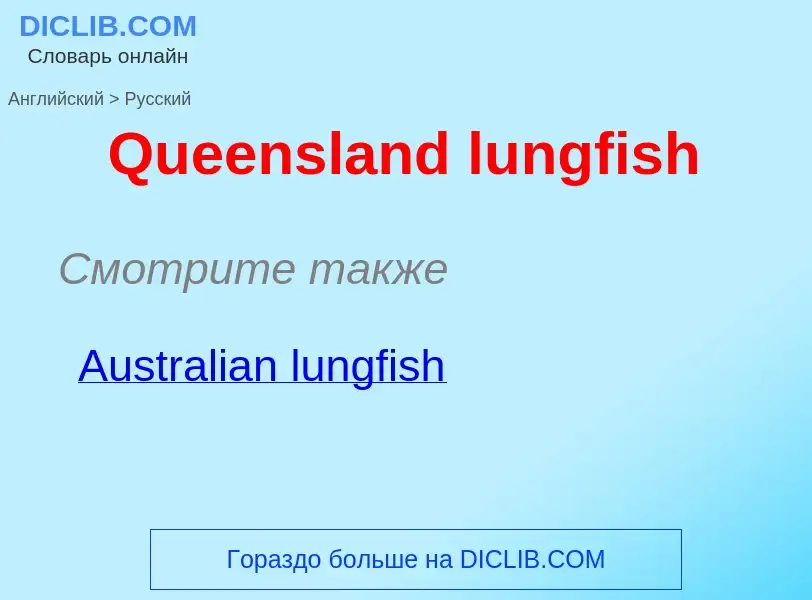Vertaling en analyse van woorden door kunstmatige intelligentie ChatGPT
Op deze pagina kunt u een gedetailleerde analyse krijgen van een woord of zin, geproduceerd met behulp van de beste kunstmatige intelligentietechnologie tot nu toe:
- hoe het woord wordt gebruikt
- gebruiksfrequentie
- het wordt vaker gebruikt in mondelinge of schriftelijke toespraken
- opties voor woordvertaling
- Gebruiksvoorbeelden (meerdere zinnen met vertaling)
- etymologie
Queensland lungfish - vertaling naar Engels
Смотрите также
общая лексика
рогозуб
баррамунда (Neoceratodus forsteri)
рогозубовые
однолёгочниковые (Ceratodontidae)
общая лексика
баррамунда
рогозуб (Neoceratodus forsteri)
однолёгочниковые
рогозубовые (Ceratodontidae)
Wikipedia
The Australian lungfish (Neoceratodus forsteri), also known as the Queensland lungfish, Burnett salmon and barramunda, is the only surviving member of the family Neoceratodontidae. It is one of only six extant lungfish species in the world. Endemic to Australia, the Neoceratodontidae are an ancient family belonging to the class Sarcopterygii, or lobe-finned fishes.
Fossil records of this group date back 380 million years, around the time when the higher vertebrate classes were beginning to evolve. Fossils of lungfish almost identical to this species have been uncovered in northern New South Wales, indicating that Neoceratodus has remained virtually unchanged for well over 100 million years, making it a living fossil and one of the oldest living vertebrate genera on the planet.
It is one of six extant representatives of the ancient air-breathing Dipnoi (lungfishes) that flourished during the Devonian period (about 413–365 million years ago) and is the outgroup to all other members of this lineage. The five other freshwater lungfish species, four in Africa and one in South America, are very different morphologically from N. forsteri. The Queensland lungfish can live for several days out of the water, if it is kept moist, but will not survive total water depletion, unlike its African counterparts.
The small settlement of Ceratodus in the Wide Bay–Burnett region of Queensland derives its name from that of the Australian lungfish. The species was named, by Gerard Krefft, in honour of the squatter and politician William Forster.

![A Queensland lungfish in the [[Frankfurt Zoological Garden]] A Queensland lungfish in the [[Frankfurt Zoological Garden]]](https://commons.wikimedia.org/wiki/Special:FilePath/Neoceratodus forsteri - Zoo Frankfurt.jpg?width=200)
